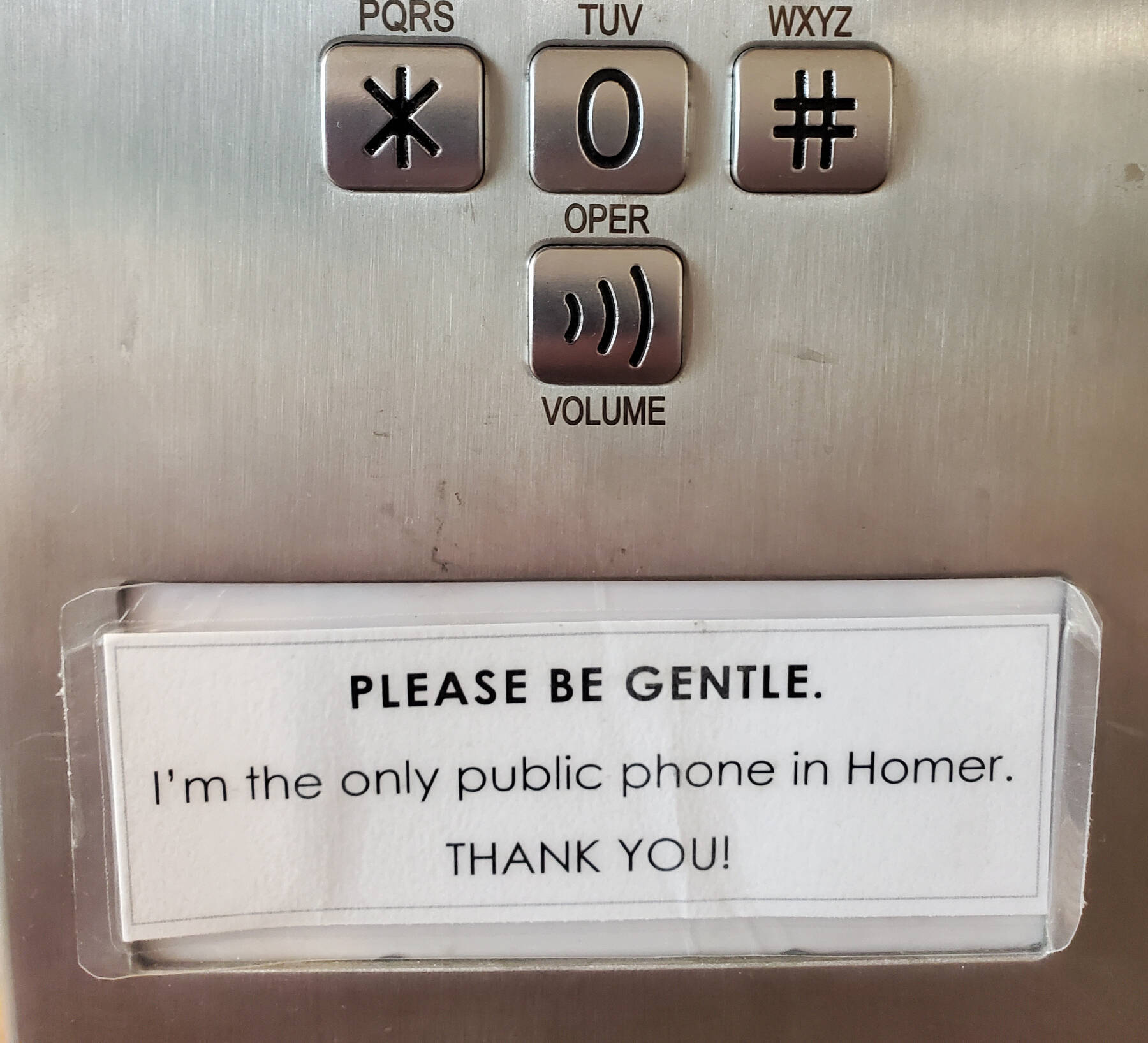I had an encounter recently which both delighted me and left me feeling bittersweetly, nostalgically vintage.
I don’t quite come from the era where payphones were installed on every corner, but in this current age of wireless everything, I do remember with an inordinate amount of fondness the telephones with their blocky black receivers and punchy silver buttons that were hardwired into the entryway wall of my local library; the still-working phone booths I found in the city or when travelling abroad; and twisting my fingers into the long, spiraled phone cord as I listened to whoever was speaking on the other end of the line. It should not surprise you that in addition to my acceptably modern smartphone (that is probably nearly a decade out of date — but if it ain’t broke, don’t fix it) I also own a good ol’ fashioned 1960-something rotary phone.
But let’s return to last week’s delight, when I stopped in at the Homer Public Library and was hailed by a couple of youths who were trying to use the library’s analog public phone.
“Excuse me?” one of them said. “Sorry — but do you know if this phone works?”
“It should!” I replied, admittedly somewhat baffled and largely preoccupied with the errand I was intending to complete.
“Do you know how to use it?” they asked — cue an internal wave of hilarity, sentiment and, oh no, does this make me part of the old guard?
But I did, or do, know how to use that kind of phone — hardwired into the wall, with silver punchy buttons and a corded receiver — so I said, “Yeah! Here, let me show you.”
Before I sound too arrogant, it’s not that the phone is difficult to use or counterintuitive — all you have to do is pick up the receiver, dial the number you wish to call, wait for the phone to ring out, et voila. The kids had tried this a couple of times already. The problem, we discovered, was that they were trying to dial a long-distance number (i.e., not one with a 235 prefix, though it was still an Alaska number), and they hadn’t known that in order to make that call, they needed to first dial ‘1’ before entering the rest of the phone number.
The phone rang through on the second try, and while one of the kids spoke to the person on the other end and made their arrangements, I explained to the other about dialing ‘1’ first for long-distance calls.
“Oh! That makes so much sense!” they said, after which we parted ways and I went about completing my errand, feeling rather giddily like a wise wizard who has just revealed an otherworldly secret.
When I talked to library director Dave Berry last Monday, he said that while the library has always had a public phone available for use — generally the black plastic handset you’ll find in any City of Homer office — the one currently installed in the entryway between the bathrooms and the front desk is “relatively new,” having been installed perhaps two years ago. It’s an armored phone, the kind designed for prisons, since the regular handsets were too often damaged before.
It’s also the only public phone in the City of Homer.
Like other items available for use through the library, the phone is free to use. It doesn’t cost the library anything to keep it in operation — or rather, Berry said, the cost for the phone is folded into the city’s phone bill, but he doesn’t think it’s a major cost driver.
“People use it for calling taxis, or kids use it for calling for rides and stuff like that,” he said. “We do have patrons who can’t afford a cellphone, and that’s their source of communication.”
The phone is best used for outgoing calls — Berry explained that if users ask someone to call them back on that line, it’s actually the library’s front desk phone that will ring.
Regardless, I’m grateful to the Homer Public Library for providing this service — both for my personal nostalgia and for the incredibly practical reasons that still exist despite the way cellphones have become so deeply entwined in every aspect of daily life.
I do, in fact, have a soapbox speech against the expectations that everyone not only own a cellphone but use it to access all sorts of services — essential and otherwise — through QR codes and downloaded apps, which is in my opinion the perfect antithesis to the illusion of accessibility that such societal expectations both ascribe to and perpetuate. But for the purposes of this column, I will leave it there, lest you begin to fear that next I’ll be yelling at kids to get off my lawn.
With all that said, I’d like to offer sincere thanks to those kids who stopped me in the library that day and let me experience being a “cool adult.” Hopefully the next generation lets you return the favor someday — in the meantime, feel free to pass on the ancient knowledge which has been bestowed upon you, as is your right and sacred duty.

